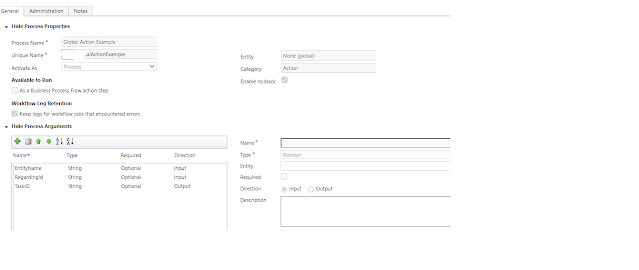Create D365 Post entity record
var record = {}; record["regardingobjectid_contact@odata.bind"] = "/contacts(ff072662-ef61-e511-93fc-000d3ab14dd2)"; //record["regardingobjectid_new_customerregistration@odata.bind"] = "/bupa_customerregistrations(910e6373-0c2f-eb11-a813-000d3a219518)"; //for custom entity record["text"] = "Customer Registration record linked success"; // Text record["source"] = 2; // Choice record["type"] = 2; // Choice Xrm.WebApi.createRecord("post", record).then( function success(result) { var newId = result.id; console.log(newId); alert(newId) }, function(error) { console.log(error.message); alert(error.message) } );



